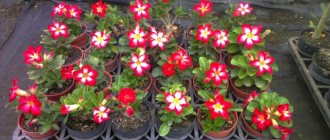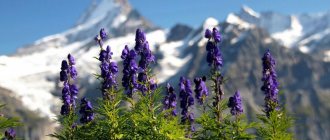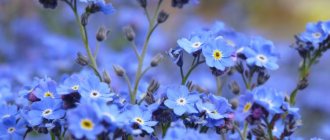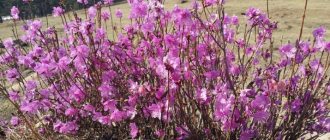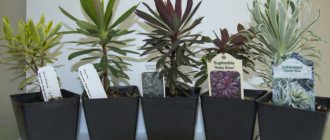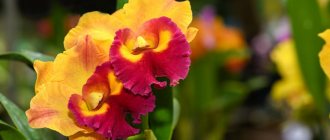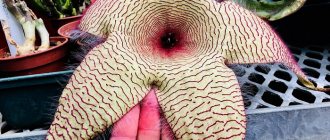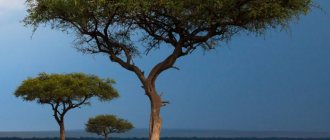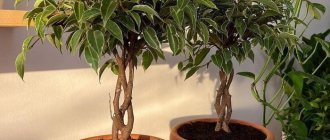Eucalyptus is a plant of the myrtle family, subfamily leptospermoides, and is the fastest growing tree. The genus Eucalyptus is one of the largest in the subfamily Leptospermoides, which includes more than 650 species, found mainly in Tasmania and Australia. Eucalyptus trees also take root in the Caucasus - in Abkhazia, Adjara, and Western Georgia. These are some of the tallest plants, some of them reaching 150 meters in height, and a trunk diameter of 25 m.
Before starting the route to give an idea of their height, it can reach 90 meters in height, and the tallest discovered was a specimen found on Mount Bow with a height of 143 meters. You may think that this is not much, or you cannot imagine how much it is. The famous Statue of Liberty that appears in hundreds of movies measuring "barely" 93 meters in height, the Pyramid of Giza measures 147 meters, so now you can see it in your mind, the tree is almost the same as the largest pyramid of Egypt.
These eucalypts are perennial trees native to south-eastern Australia, especially Tasmania and regional Victoria. They usually last an average of 400 years, and until they die they never stop growing. They have large leaves, lanceolate, 9 to 14 centimeters long. Its flowers are beautiful and usually appear in groups of 9 to 15, each one cm in diameter. The eucalyptus fruit is a small capsule that gives a very rich aroma, characteristic of eucalyptus forests. It is the tallest of all flowering plants.
Types and varieties of eucalyptus, appearance
Eucalyptus leaves are pointed, oblong, somewhat similar to the leaves of our willow. The oldest eucalyptus tree reaches 100 m in height. However, its height can vary; eucalyptus can also grow as a shrub. The eucalyptus flower is yellow, red or white and looks very interesting. They look like a bunch of fringe with small dots of a different color at the end. The tree crowns themselves usually have a weeping shape.
In total, more than 700 species of this plant are known. There are conical, almond-leaved, berry, crowded, ash, white, parvifolia and other types of eucalyptus.
Description of eucalyptus
Of the huge number of trees growing on earth, several species amaze with their enormous size, their height reaches 100 meters or more. Eucalyptus can rightfully be considered one of these “green giants”.
The homeland of this interesting plant is Australia. In its homeland, this evergreen tree has more than a hundred varieties. Australia is a large continent and has almost all climatic zones, and each zone has its own eucalyptus trees.
This is a low-growing shrub that grows in the arid climate of the desert regions of Central Australia, these are gnarled, unsightly-looking trees in mountainous areas, these are giant, regal and spherical species of eucalyptus of enormous height that can only live in the humid climate of the subtropics. These majestic trees, with perfectly straight trunks and luxurious crowns, are truly a miracle of nature.
Eucalyptus is a very fast growing tree. In just one year, this tree grows almost 5 meters. Moreover, it grows both in height and in width. Of course, it is difficult for eucalyptus to compete in height with the American sequoia, the largest tree on earth today. In the state of California, USA. there is a sequoia growing with the name Hyperion, whose height, according to 2006 data, is 115.61 m. But nevertheless, in Australian Tasmania there is a eucalyptus whose height is 92 m.
These amazing trees have many unusual properties. So on one tree, on different branches, leaves of different shapes grow. On young branches there are soft leaves of a bluish color, round in shape, covered with a waxy layer. On older branches the leaves are hard and oblong. Moreover, these leaves behave in an unusual way. They are always turned edge towards the sun. Therefore, it is not surprising that a large tree, seemingly with a powerful crown, provides little shade. Thanks to this ability, eucalyptus can retain the moisture it absorbs for a long time. And it takes in quite a lot of moisture, it’s a real water pump. One such tree can absorb more than 300 liters of moisture within a day. And in a year, this water drinker drinks more than 100 tons of water. Because of these properties, this tree is often used in land reclamation.
Eucalyptus is an evergreen plant, but once a year it changes its bark. After a hot summer, in March, the bark that has dried over the summer becomes brown, it bubbles away from the wood of the trunk, curls up and falls to the ground in rags. After this, its trunk becomes smooth and shines with various colors of the rainbow. Depending on the species, after the fall, the trunks of eucalyptus trees can be white, green, yellow, blue and red. This species is called rainbow eucalyptus.
Eucalyptus forests are home to very cute animals - koalas. They feed exclusively on the leaves of this tree. It is known that its leaves are quite poisonous because they contain hydrocyanic acid. But it turns out that this poison has almost no effect on the koala. Then they are specialists in eucalyptus and choose different types of trees in different seasons, at a time when they contain minimal amounts of hydrocyanic acid. Well, and then a koala is, in fact, a bear, albeit a marsupial. So he doesn't care.
In the fourth or fifth year of life, eucalyptus blooms. And it blooms in a very unique way. First, a rigid round-shaped box appears on a separate peduncle, at the end of which there is a bottom. As the box grows, it increases in size and becomes woody. Then the bottom falls off and a lush flower tassel consisting of hairy stamens appears from the box. Different species have flowers of different colors: white, yellow, pink and bright red. The flowers have a light, pleasant aroma.
After flowering, fruits form in place of the flower. Different types of eucalyptus have fruits that differ in shape, but most often they look like small bells, but closed at the bottom. These bells contain seeds. The seeds take a long time to ripen, a whole year, but can be stored for several years without losing their germination capacity.
Where and how does it grow
Eucalyptus (a tree native to Australia) grows in entire groves, or even creating forests. There this wild plant forms entire thickets. It also grows wild in large quantities in Indonesia, New Zealand, the Philippine Islands and New Guinea. Now it grows not only there, but in most corners of the earth.
Eucalyptus grows quickly, and this has gained popularity among green spaces not only in Asia and Africa, but also in Europe and America. It is often used to drain soil in wetlands. Eucalyptus trees prefer to grow in places where there is a lot of sunlight, particularly on mountain slopes. However, some of their species also grow in gorges.
Medicinal properties and use in medicine
Acetic acid and wood alcohol are obtained from eucalyptus wood. Eucalyptus wood is valued on the world market. It is a building material used in shipbuilding and is a raw material for the pulp and paper industry; it is also used for the preparation of varnishes and glues. The wood has good strength and does not rot, as well as fungi and insects.
The choice of species depends on factors such as climate, soil and the product to be produced, i.e. firewood and charcoal, cellulose, sleepers, posts, stakes and muri, essential oils, building materials or furniture. A raw material for the pulp and paper industry, eucalyptus is gaining strategic importance as a vegetable fuel as well as a weapon for carbon sequestration. “We talk a lot about cane alcohol, which is just one of many options for reducing environmental damage,” says Professor Gonzalo Amarante Guimarães Pereira from the Institute of Biology at Unicamp.
Excellent for interior decoration and furniture production. Rubber is obtained from some types of eucalyptus trees. When drying, cracks can form in the wood, so problems often arise with this. Already treated wood glues well, bends and holds fastenings well. When eucalyptus wood burns, a large amount of heat is released, so it is used as fuel. In its homeland, eucalyptus wood is widely used.
At the time, the American concern was to study the effects of the atomic bomb on surviving victims. Since nothing was sequenced, it seemed like an impossible proposition, like a ship landing on the sun. This was a good lesson for us, what we lack in this determination and ability to organize the basis of our underdevelopment, the teacher criticizes.
Everything we see around us, including our own clothes, carries a high dose of petrochemicals. The future of the planet lies in replacing petrochemicals with renewable sources, with eucalyptus being an exclusive focus of study. The area under eucalyptus cultivation on the planet is estimated at 18 million hectares, and Brazil grows about 3.5 million hectares with the highest yields in the world.
Sleepers, posts, and supports made of eucalyptus wood are considered durable. In Russia, eucalyptus is known as a medicinal plant. Eucalyptus is used both in medicine and in perfumery. In medicine, they use the species of eucalyptus globulus and ash, which grow on the coast of the Caucasus. Eucalyptus is used against coughs, as an expectorant, taken as tea, or an infusion of leaves; it is included in various preparations. Eucalyptus helps with the flu, helps improve immunity, cleans the air in the house well, and kills all germs. Essential oil is obtained from the leaves of the tree, which is used as a disinfectant.
Eucalyptus, originally from Australia, has more than 600 species and 20 of them are planted in more than 100 countries for energy and industrial purposes. Exotic species in Brazil, they have crossed over and offered enormous genetic variability. But in the first forests planted, there was little knowledge of genetic constitution, and the plants were not the best, explains Pereira.
For the layman, the professor explains that the traditional technique for improving the performance of eucalyptus involves crossing plants with the best genetic content before clones, called “elites,” arrive for planting at scale. Molecular biology techniques can optimize this process by identifying genetic markers associated with characteristics of interest. We took the plants while they were still young, for which we do not yet have performance data, and from the markers we predict those that will produce good plants.
Eucalyptus leaves can be used as an alcohol tincture. For infected wounds, use a decoction of dry or fresh cut leaves. You need to collect leaves in a warm period or in the fall, because that’s when the leaves contain more essential oil. You can dry the leaves outdoors. Also, tincture and oil are used as an anti-inflammatory agent for diseases of the throat cavity.
In aromatherapy, eucalyptus essential oils are used as a soothing and relaxing agent; the oil is also used in the composition of many shower gels and balms; it is also taken as a basis for inhalation preparations. Many medicines are prepared from eucalyptus. The oil is used as a pain reliever and helps with burns and redness of the skin. In cosmetology, oil is used to whiten skin, strengthen nails and hair.
A toner containing eucalyptus oil is used to combat blackheads; the oil can also be found in many creams. Eucalyptus decoction helps with intestinal diseases, and tincture helps with infectious diseases and erosions. Eucalyptus-based ointments are good for joint diseases. Eucalyptus is a truly unique tree that does not require much care when grown at home. Just a little care for him and he will become an excellent house doctor for the whole family, because it is not for nothing that in his homeland he is called the “tree of life.”
Eucalyptus is an evergreen tree with about a hundred varieties. The most famous are: rainbow, spherical, large and regal, growing up to 100 meters.
Eucalyptus trees grow in Australia, New Zealand, and Tasmania. They have the property of accumulating moisture by turning the leaves with their edges towards the sunlight.
The leaves of the eucalyptus tree have high healing properties; they also serve as the only type of food for the Australian marsupial bear, the koala.
Curly pros... Regal uh... Rainbow euca...
Application
In cooking
A small amount of eucalyptus leaves is added to marinades for meat and fish, which gives them an indescribable, lasting aroma. In addition, they are even added to confectionery products, which gives them a feeling of freshness. Eucalyptus is also added to tea if you want to get a boost of energy for the day or to keep warm in bad weather.
In medicine
Eucalyptus is very widely used in medicine due to its disinfectant, wound healing and analgesic properties, as well as its ability to strengthen the immune system. Its healing properties are used in the treatment of bronchitis, sore throat, acute respiratory infections, influenza and even tuberculosis. As well as osteochondrosis, arthritis, neuralgia and many other diseases.
When losing weight
Scientists have proven that inhaling eucalyptus essential oil reduces food cravings. So if you get excited by the sight of delicious food in a window or in a picture, eucalyptus oil will help you. And if you're just trying to lose weight, inhaling eucalyptus oil before meals will reduce your appetite, resulting in you being satisfied with a much smaller portion.
At home
The aroma of eucalyptus oil or freshly ground dry leaves of this plant helps get rid of unpleasant odors in the house. In addition, harmful insects, including mosquitoes, also do not like this smell. And for those who like to take a steam bath, a eucalyptus broom will bring double pleasure and benefit.
In cosmetology
Eucalyptus is used to care for problematic and oily facial skin, treat herpes or other acne due to its antibacterial properties. A decoction of eucalyptus leaves is frozen in portions and the skin prone to rashes is rubbed with this ice. Eucalyptus contains substances that promote skin cell regeneration. That is why it is added to many creams and masks. It is also successfully used in anti-dandruff shampoos.
Side effects and contraindications
Side effects occur only with uncontrolled use of the plant. Strict adherence to the instructions reduces the risk of complications to a minimum. In addition, the treatment must be constantly monitored by a doctor or other health care professional.
You should avoid the therapeutic effects of eucalyptus if:
- individual intolerance to the product and its constituent components;
- the manifestation of an allergic reaction in the first few hours/days after the start of therapy;
- hypersensitivity to the product;
- severe kidney and liver diseases;
- whooping cough;
- spasm of the respiratory tract;
- epilepsy;
- carrying out chemotherapy;
- minimum age threshold (eucalyptus is allowed for children from 2 years old) [13].
Pregnant and breastfeeding women should take special care.
A woman should coordinate any action (especially of a therapeutic nature) with her doctor. If a specialist gives permission and is ready to monitor the mother’s health at each stage, then feel free to use eucalyptus according to the instructions and therapeutic course. Do not self-medicate so as not to endanger your health and the life of your child.
How to grow, care and pests and diseases
Eucalyptus is one of the fastest growing trees in nature. It propagates not only by seeds, but also by cuttings.
Small silvery eucalyptus cineria (indoor version) looks very good in bouquets. At home it can also be grown from seeds that are sown in winter. The interesting thing is that they don’t even need to be covered with soil, because they germinate better when there is a lot of light. The main thing is not to over-moisten the seeds, otherwise they may rot.
When the seedlings have 4-5 leaves, they can be transplanted to a permanent place. They can be transplanted outside or into a pot, but then it will need to be replanted every year. Eucalyptus likes loose soil. It is responsive to fertilizers, but this should not be done more than once a month.
Eucalyptus is disease resistant. Those pests that can settle in it (spider mites and shield aphids) are destroyed with special purchased products.
Home care
Eucalyptus globulus (round) is grown at home. In indoor conditions, eucalyptus is a small shrub that needs constant pruning of its leaves. Flowering cannot be seen. For eucalyptus, it is important that it receives a lot of light, preferably direct sunlight. In the summer, before you take the plant out onto the balcony, you must first put it in the shade so that it gets used to watering it as often as possible. Eucalyptus loves fresh air, but the main thing is that there are no drafts. It needs to be watered frequently and abundantly so that the soil in the pot is always moist. For irrigation, it is better to use settled water heated to room temperature. It does not need to be sprayed like other plants; normal air humidity, or even slightly increased, is suitable for it. You can leave a container of water next to the plant. To prevent the tree from growing too tall, the top of the tree trunk must be trimmed; this should be done annually in the spring months. After pruning, the bush will begin to produce young shoots, and for better bushiness, you need to pinch out new shoots.
In forests, water that hits the foliage evaporates, but in eucalyptus plantation areas, most rainfall falls directly into the soil. When eucalyptus is harvested for a tree, its bark, branches and leaves—the parts of the tree that concentrate about 70% of its nutrients—are left in the forest itself, where they decompose. This material forms a thick blanket of organic matter that protects the soil surface from erosion. As they decompose, parts of the trees are incorporated into the ground and their nutrients are used by other eucalyptus trees that grow there.
Preparation and storage
It is best to harvest eucalyptus leaves in September, and you need to choose young leaves, which contain much more essential oils. When harvested industrially, whole branches are cut off using cleavers, and then the leaves are torn off from them by hand. They are dried in special dryers. But at home this is done in the fresh air or in a room with good ventilation. Store in a dark, dry and cool place.
Popular types
Only a few species are suitable for growing indoors. Sellers rarely provide complete information about these flowers, but buyers who are plant lovers can easily distinguish one species from another.
- Ash eucalyptus is also called dollar eucalyptus for its silvery, ovate leaves that do not change shape throughout its life.
- The globular eucalyptus has yellow bark and blooms thickly.
- Gunni gives off almost no aroma. It can be recognized by its bluish tint, which eventually turns green. There are varieties with small leaves and more pronounced shades.
- Parvifolia is a spreading bush, surprising with a huge number of shoots. Its leaves are lanceolate and small, their color is dark green.
Flowers
Rainbow eucalyptus flowers are unusual.
They have no petals or sepals. However, they do have stamens and a pistil. The stamens are the male reproductive organs and the pistil is the female organ. Flower buds take the form of a capsule containing the stamens and pistil. The capsule has a conical cover called the operculum. When the bud matures, the operculum becomes dark and wrinkled.
After pollination and fertilization, the capsule becomes a woody fruit containing seeds.
The name "eucalyptus" comes from two Greek words - "es", which means "good", and "kalyptos", which means "covered".
Leaves and oil
Eucalyptus leaves are leathery and hang from the branches. They are often long, narrow and spear-shaped, although some species have wider and rounder leaves. Some species of eucalyptus produce copious amounts of oil that is volatile as well as aromatic. When a large number of trees grow close to each other, the evaporated oil sometimes forms a mist in the air.
Use in landscape design
Eucalyptus is a tree with an expressive appearance. It does not shed its leaves and delights with lush greenery all year round. Landscape design specialists have long learned to restrain the exorbitant growth of “wards” through pruning, obtaining beautiful compact trees with well-formed crowns.
Landscape architects also know many valuable features of eucalyptus that make this tree so attractive to them.
Eucalyptus is also suitable for stabilizing soils on steep slopes and the banks of water bodies. Planting these trees helps prevent erosion. The plant loves moist sandy loam soils with a neutral or slightly acidic pH.
General characteristics of the tree
Eucalyptus grows well in natural conditions, but its great value forces humanity to additionally grow the tree. This is not surprising, because the price is not only for the leaves, as medicinal raw materials, but also for the bark and wood of the plant.
Places of growth
The eucalyptus tree is classified as a fast-growing tree. In tropical climates, it can reach 30 m in height in just 15 years. It is actively grown for industrial processing in Africa, America, the southern part of Europe, as well as in the Black Sea coast of the Caucasus. In the wild, eucalyptus grows almost throughout Australia, on the island of Tasmania. These places are considered his homeland.
Eucalyptus globulus prefers moist soil with good drainage. Feels great on soil mixed with sand, clay, and small stones. Although eucalyptus is considered a very heat-loving plant, it can withstand light frosts (down to −8 °C). When the temperature drops even further, the tree dies, freezing from the root.
What does it look like
Eucalyptus globulus is an evergreen plant. In nature, there are trees up to 80 m tall, their diameter reaches two meters. That is, eucalyptus is quite a worthy competitor to the American Sequoia both in height and in the massiveness of the trunk. At the same time, the tree simply surprises with its voluminous crown of a regular spherical shape.
- Bark. The trunk and branches of globular eucalyptus are covered with medium-thick bark of an unusual color - white-gray with a blue tint. Deep grooves can be traced on the surface, formed as a result of the gradual peeling of the upper layers of the bark. Parts of it often hang from the tree, falling off from time to time.
- Leaves. All foliage on a tree is divided into young and old. The first is represented by leaves “sitting” on young shoots, closely enveloping them. The color is bright gray, the surface is leathery. Even young leaves are quite large - from 7 to 16 cm long and up to 10 cm wide. It is in the young foliage that the largest amount of essential oil, rich in the antiseptic cineole, accumulates. Large old leaves, thanks to the petiole, turn edge-on towards the sun's rays. They are shiny, dark green in color, and have a crescent-lanceolate shape. Dimensions range from 10 to 30 cm long and 3-4 cm wide.
- Flowers. Eucalyptus blooms with light axillary flowers for the first time in October, in the third year of tree growth. Flowering is short-lived.
- Fetus. Presented as a tube-shaped box. It reaches 15 cm in length and 30 cm in width. There are several grooves on the surface of the box. Inside there are one or two seeds, which finally ripen only after a year and a half.
The powerful root system of eucalyptus is capable of drawing moisture from a large area. For this quality, the tree is also called a “natural pump” and is planted in swampy areas that require drainage.
Leaf harvesting process
Eucalyptus leaves are used as medicinal raw materials. In order to obtain them, wild and specially grown trees are pruned in the fall. The cut branches are carefully folded so as not to damage the leaves. During the collection of raw materials, annual pruning occurs in order to form a dense crown.
The branches along with the leaves are tied into small brooms and hung in a shaded place outdoors or in a well-ventilated room. When drying, the leaves release vapors containing phytoncides. They are able to disinfect and purify the air in any room.
Dry branches are wrapped in paper and topped with a plastic bag. Store suspended for two years in a dry place with good ventilation. If it is necessary to separate the leaves from the branches, they are placed in a glass or plastic container and hermetically sealed. Store protected from light. If dryers are used to prepare raw materials, it is necessary to maintain a low temperature of 35°C to avoid evaporation of the essential oil.
Features of cultivation
You can grow a decorative eucalyptus tree from seeds. Their germination rate is usually quite high. Sowing is done in a moist mixture of soil and sand. Containers with seeds are placed in a well-lit place with an air temperature of +18 degrees.
The first shoots appear in approximately 5-10 days. At this time, you need to ensure that the soil does not dry out and the room is regularly ventilated.
Seedlings dive when they reach a height of 3 centimeters. This must be done very carefully so as not to damage the root system. After 3-4 weeks, the plants should grow and become stronger. Only then can they be transplanted into permanent pots.
Eucalyptus in modern pharmacology
Modern science does not dispute the achievements of traditional healers on the use of eucalyptus. Researchers have significantly expanded the range of applications. Today, drug manufacturers widely use eucalyptus leaves.
Eucalyptol, which is part of the oil, is valued for its antiseptic and expectorant properties. It is used in the production of drugs for the treatment of colds, flu, and acute respiratory infections. A mixture of eucalyptus and tea tree oils is a powerful remedy for fighting a runny nose. This component is also included in oral care products.
